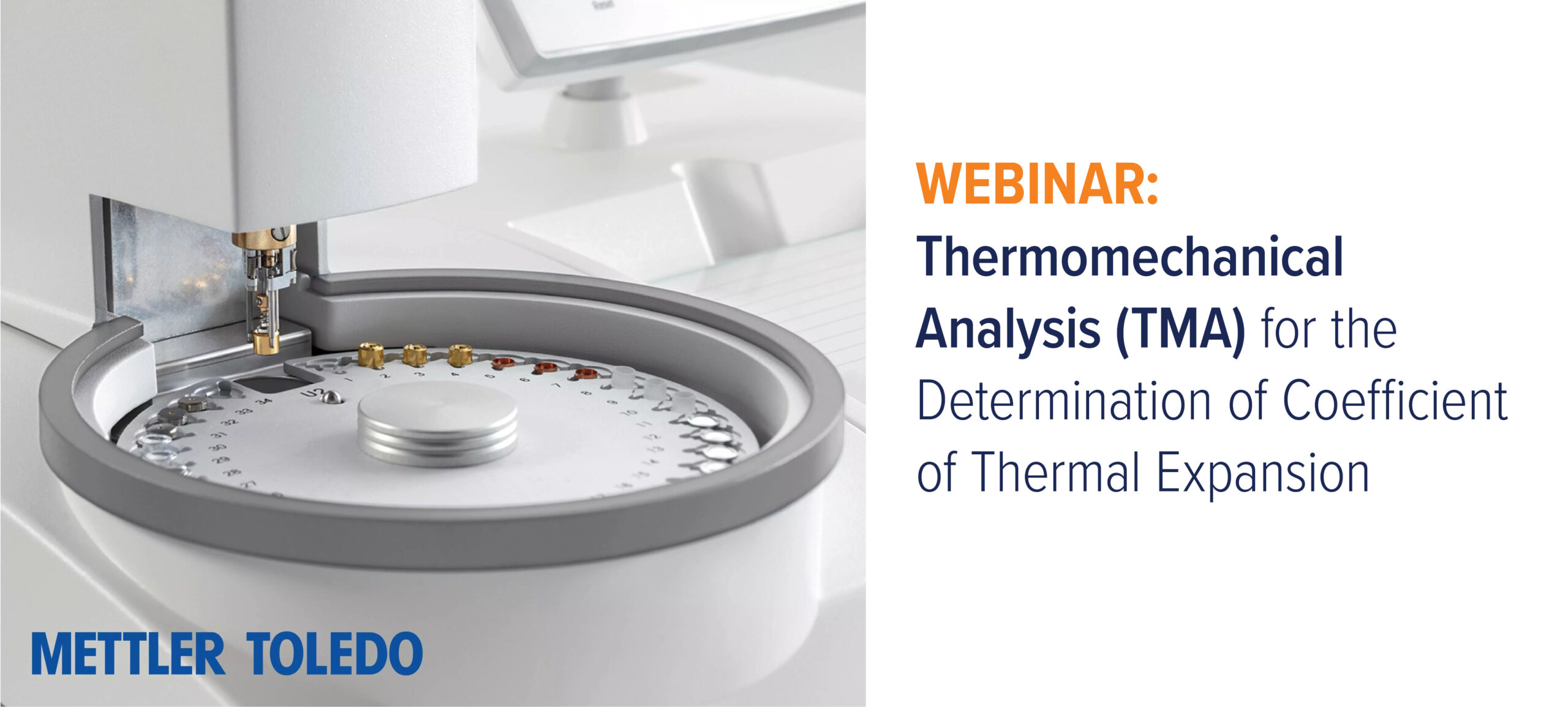
Thermomechanical analysis (TMA) is used to measure the dimensional changes of a material as a function of temperature. It is one of the most important thermal analysis techniques, complementary to the well-established DSC, TGA and DMA techniques. It can measure relaxation effects that are often not detected by DSC.
Webinar Overview
TMA quickly provides characteristic information on materials from very thin layers to large samples, plastic laminates, fibers, and single crystals. TMA measures the temperature of effects in which dimensional changes occur, such as glass transitions, softening, solid-solid transitions, fusion and decomposition (foaming, delamination, etc.).
The characteristic values and properties most frequently studied include expansion coefficients, glass transition temperatures, softening temperatures, solid-solid transitions and melting behavior.
Key Takeaways
– Understand the basics of thermomechanical analysis (TMA)
– Explore the measurement modes of a TMA
– Understand why TMA is complementary to differential scanning calorimetry
– Examine TMA application examples from different industries
– Discover opportunities for TMA automation
Meet our Speakers

Blaine Weddle
Blaine Weddle joined the Materials Characterization team at Mettler Toledo in 1998. In his current role as a Technology & Applications Consultant, he works with the sales team to bring his combined knowledge of thermal analysis and Mettler Toledo’s unique capabilities to help potential customers solve complex problems with their materials.

Brandy Staffen
Brandy Staffen has been with Mettler Toledo for 9 years as an Area Distribution Manager. Her role as an ADM is being a liaison between distribution partner GSS and Mettler Toledo – Lab. Staffen has held various sales and sales management positions in the Laboratory consumable and instrumentation markets for the past 23 years. Prior to her sales career, she worked as a Research Technician at the University of Pittsburgh.
